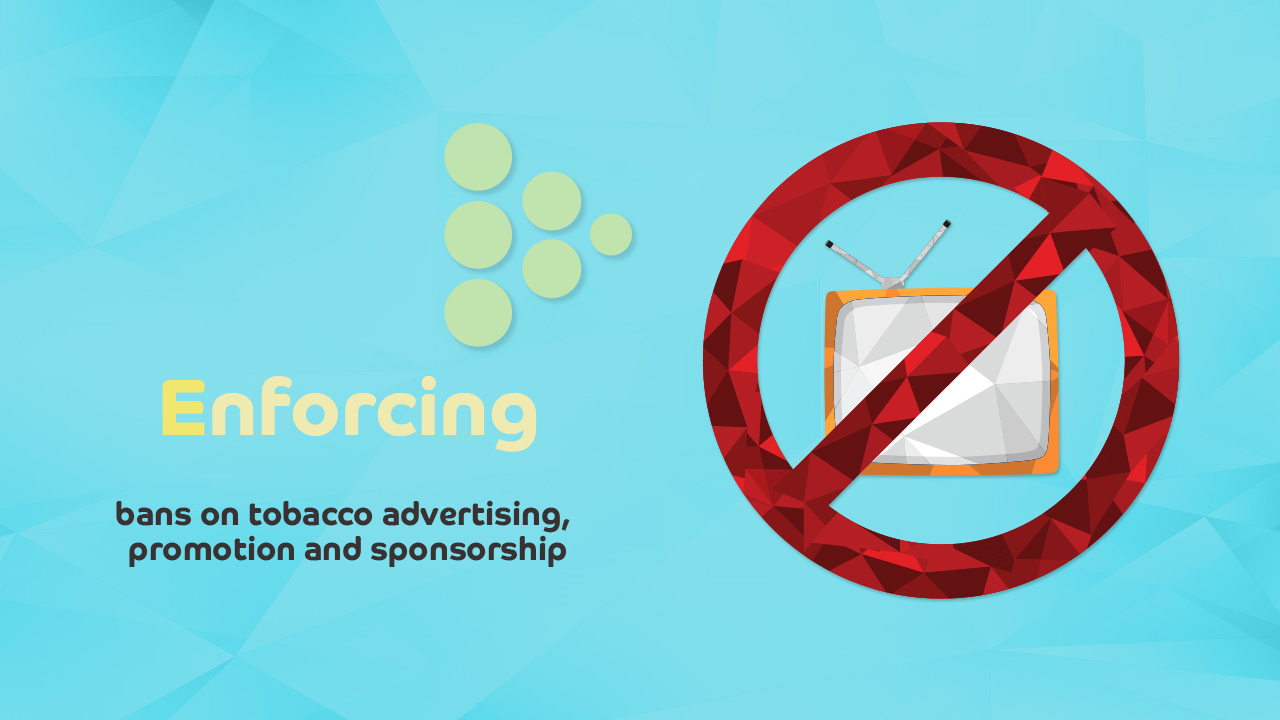
Context
Qatar became the first country of both the Gulf Cooperation Council and the WHO Eastern Mediterranean Region to ratify the WHO Framework Convention on Tobacco Control (WHO FCTC) on 23 July 2004. Preceding this, Qatar had already enacted its initial tobacco control law, Law No. 20 of 2002. This legislation provided a robust and comprehensive foundation for tobacco control efforts within the country by incorporating various measures in a single law. To adhere to Article 13 of the WHO FCTC, Qatar incorporated limitations on tobacco advertising, promotion and sponsorship in Article 8 of the 2002 tobacco control law, although some forms of advertising remained permissible. Nevertheless, the tobacco industry in Qatar exploited the existing loopholes within the law to boost tobacco use and sales through diverse advertising strategies. Examples of these tactics employed by the industry include:
Employing promotional allowances to compensate retailers for allocating shelf space, engaging in cooperative advertising and providing trade promotions to wholesalers. Retailers were incentivized to stock a wide range of brands, even those with low market demand.
Displaying cigarette advertisements at points-of-sale within shops to encourage impulse purchases.
Placing advertisements in magazines, newspapers, social media platforms and the internet, primarily targeting new tobacco products such as e-cigarettes, heated tobacco products and nicotine patches.
Associating waterpipe services with restaurants, with some establishments advertising free waterpipe use.
Utilizing product packaging as a means of promoting and advertising tobacco products.
Asserting that waterpipe use is comparatively less harmful than other types of tobacco products.
Employing various tobacco flavours, particularly for waterpipe tobacco, to promote its usage among both males and females, employing different flavour options.
Initiative
In an effort to eliminate both direct and indirect advertising, promotion and sponsorship of tobacco products, Qatar has taken significant steps by introducing various administrative and legislative measures. The country enacted a new tobacco control law, Law No. 10 of 2016, which, under Article 9, imposes a comprehensive ban on all forms of advertising, promotion and sponsorship of tobacco products across all media platforms, including radio, television, print, internet and social media. Moreover, Article 16 of the law establishes stricter penalties and higher fines for violations. To ensure effective implementation of this comprehensive ban, Qatar has established a collaborative partnership platform involving all relevant stakeholders. Additionally, the country has banned any form of advertising and promotion for waterpipe tobacco in cafes and sales outlets. As part of preparations for the upcoming FIFA World Cup 2022 hosted by Qatar, the country has embraced FIFA policies that prohibit any tobacco advertisements. To enhance the impact of the advertising ban, Qatar has also implemented pictorial health warning labels on both the interior and exterior packaging of tobacco products.
Challenges and lessons learnt
Despite the effectiveness of the tobacco control policies in curbing advertising, promotion and sponsorship of tobacco and its products through print media, television and radio, the regulation of internet and social media platforms posed a significant challenge, especially regarding newly introduced tobacco products. To address this issue, law enforcement played a crucial role in monitoring violations related to direct and indirect advertising, promotion and sponsorship of tobacco products, with appropriate measures taken against offenders. Notably, the compliance level in Qatar has been commendable, ranging from 7 to 10 out of 10, as indicated by the latest WHO Report on the Global Tobacco Epidemic of 2019. The compliance data collected for the report demonstrate the robust enforcement of both direct tobacco advertising bans and bans on tobacco promotion and sponsorship in the country.
Furthermore, efforts have been undertaken to enhance awareness and educate the tobacco industry and retailers about the definition and significance of tobacco advertising, promotion and sponsorship outlined in the tobacco control law. A notable aspect of Qatar's successful initiative lies in the utilization of various tobacco control interventions aimed at eliminating all forms of direct and indirect advertising, promotion and sponsorship of tobacco products.
Impact
Although there has not been a specific measurement of the direct impact of the ban on tobacco advertising, promotion and sponsorship in Qatar, data from the Global Youth Tobacco Survey of 2004 and 2018 provide some insights. The data indicate a notable decrease of 4.5% in the prevalence of current tobacco use among youth, with rates of 5.4% for males and 4.0% for females. Additionally, there has been a significant reduction of 30.6% in the reporting of youth watching TV and witnessing actors smoking, along with a 4.1% decline in reporting instances of receiving free tobacco products from representatives of tobacco companies.
Next steps
As part of its future plans, Qatar intends to implement plain packaging measures to prevent the tobacco industry from utilizing tobacco product packaging as a medium for advertising and promoting tobacco. This step aims to enhance the existing ban on advertising, promotion and sponsorship.
References
MPOWER measures to reduce demand for tobacco
WHO Framework Convention on Tobacco Control
WHO Report on the Global Epidemic Tobacco 2019
Story originated in 2019.




